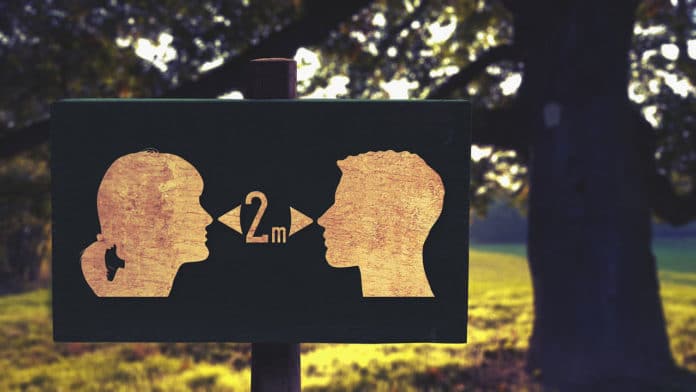In a new study, scientists developed a model to test the effectiveness of measures, for example, physical distancing, masks, or social bubbles when used in different settings.
They found that physical distancing is universally effective, while social bubbles and masks are more situation-dependent.
The study was conducted by Simon Fraser University professors Paul Tupper and Caroline Colijn. Within the model, scientists introduced a concept of “event R,” which is the expected number of people who become infected with COVID-19 from one individual at an event.
Scientists examined the factors such as transmission intensity, duration of exposure, the proximity of individuals, and degree of mixing. They then look at methods that were found to be most effective at preventing transmission in each circumstance.
In the model, scientists included the data from reports of outbreaks at various events, such as parties, meals, nightclubs, public transit, and restaurants.
Events were categorized as saturating (high transmission probability) or linear (low transmission probability). Examples of high transmission settings include bars, nightclubs, and overcrowded workplaces, while low transmission settings include public transit with masks, distancing in restaurants, and outdoor activities.
The model suggests that social bubbles are less effective in low transmission settings or activities where there is mixing, such as engaging in outdoor activities, working in spaced offices, or traveling on public transportation masks.
They noted, “Masks and other physical barriers may be less effective in saturating, high transmission settings (parties, choirs, restaurant kitchens, crowded offices, nightclubs, and bars) because even if masks halve the transmission rates that may not have much impact on the transmission probability (and so on the number of infections).”
Colijn said, “It would be great to start collecting information from exposures and outbreaks: the number of attendees, the amount of mixing, the levels of crowding, the noise level, and the duration of the event.”
Journal Reference:
- Paul Tupper, Himani Boury, Madi Yerlanov, Caroline Colijn. Event-specific interventions to minimize COVID-19 transmission. Proceedings of the National Academy of Sciences, 2020; 202019324 DOI: 10.1073/pnas.2019324117
